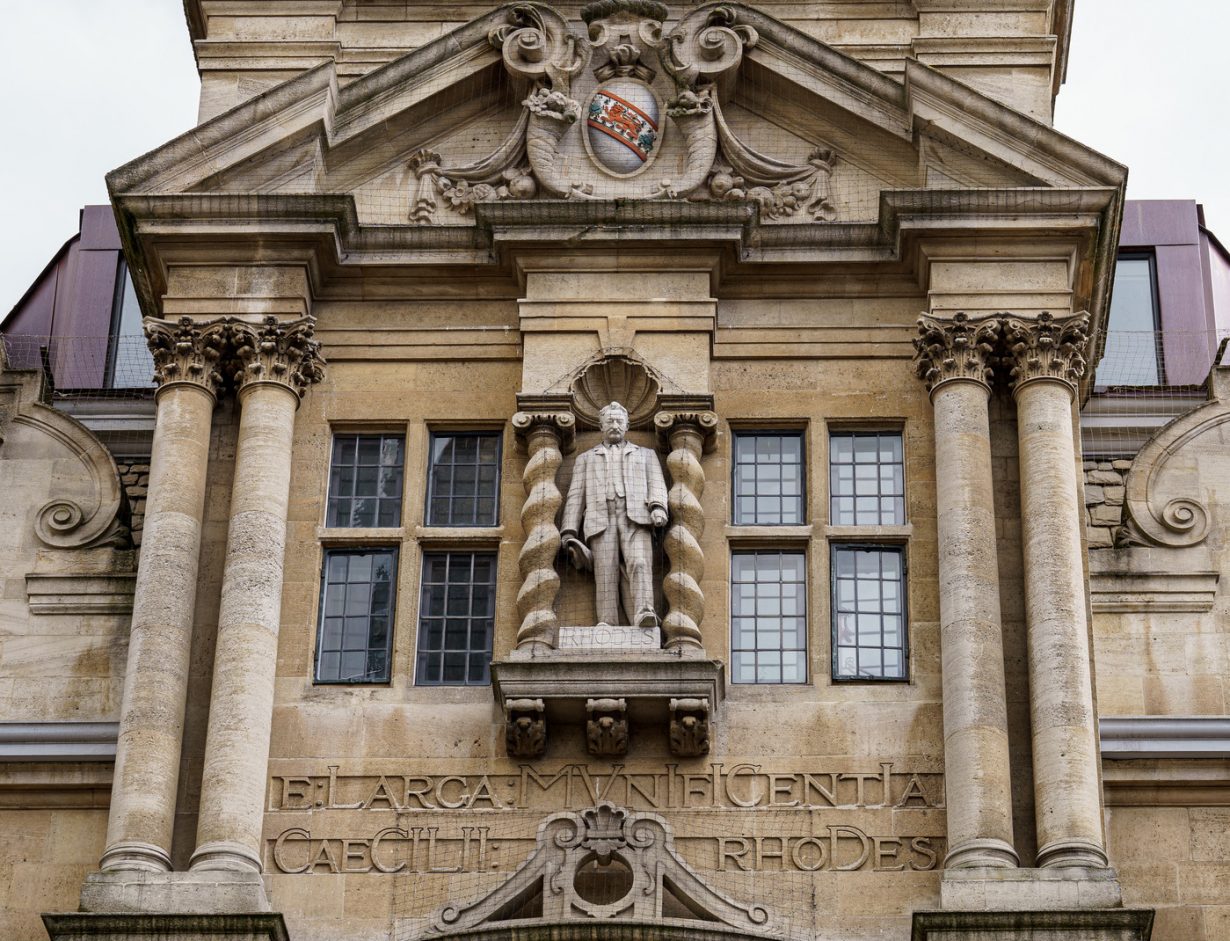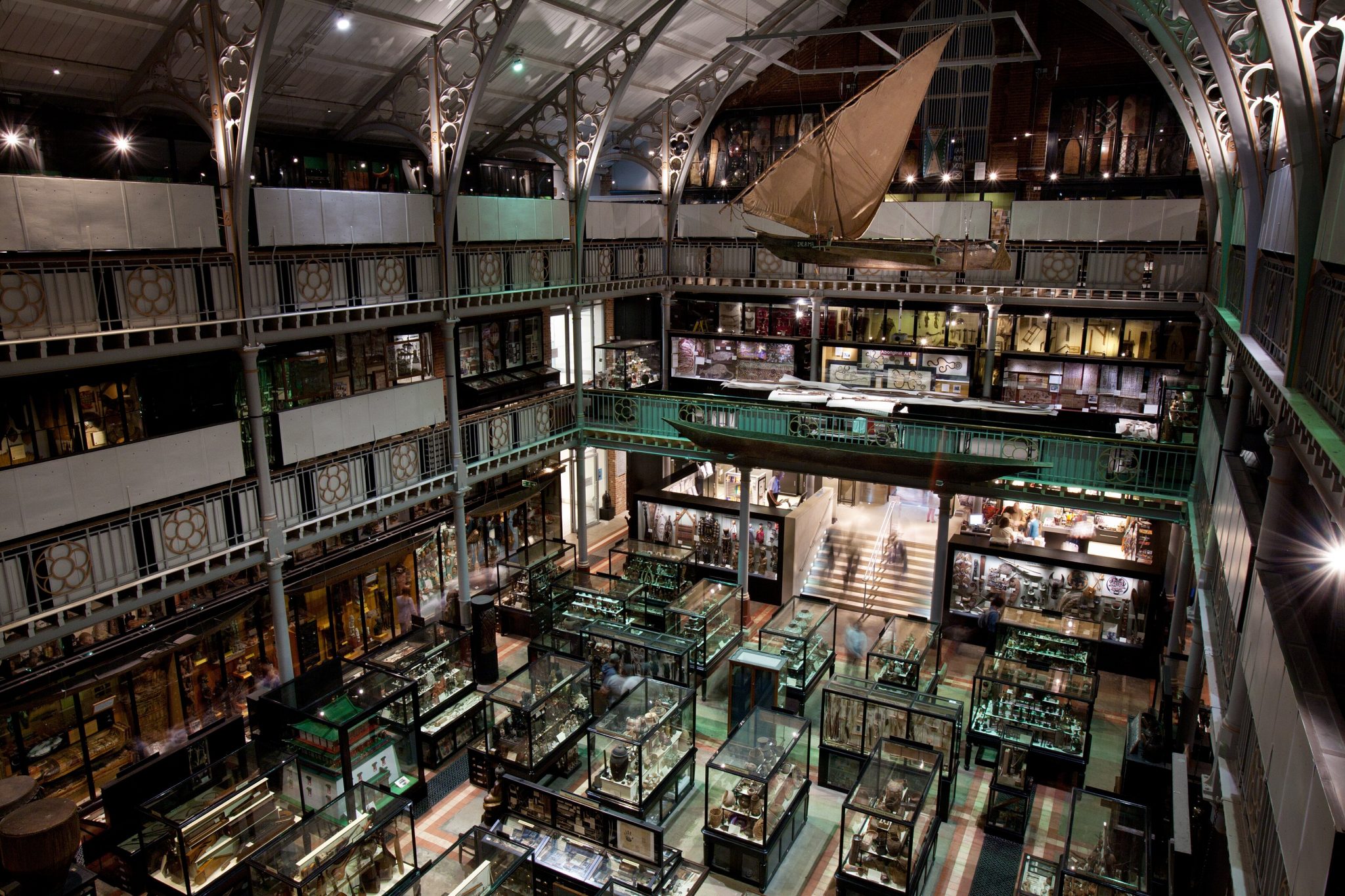Every Monument Will Fall, says Dan Hicks in his new book, but what comes next?
‘Any society chooses its heritage by deciding what it wishes to retain,’ writes Dan Hicks towards the end of Every Monument Will Fall. Hicks, professor of archaeology at Oxford and a prominent commentator in the ferocious arguments over museum collections and monuments in recent years, insists on ‘the right that any society or community has to define its own memory culture, rather than always having to hold onto the memories, ideologies, misrepresentations of a hundred years ago or more, the tired propaganda of its ancestors’. Having taken on the big issue of how Western museum collections are inextricably tied up with the history of Western imperialism in his feted pro-restitution book The Brutish Museums (2020), Hicks now turns his fire on the institution where he’s a curator, the University of Oxford’s Pitt Rivers Museum, and in particular its founder, the wealthy Victorian military officer, archaeologist and anthropologist Augustus Henry Lane Fox, later to inherit the name Pitt-Rivers.
Suffice to say that, in Hicks’s telling, Pitt-Rivers was, like many of his generation of high-Victorian, ruling-class imperialists, an arsehole. Hicks’s book is a biography of sorts, but one which takes the man supposedly instrumental in establishing archaeology and anthropology as academic disciplines as the starting point for a vivid, uncompromising account of the emergent ideology of racial supremacy that undergirded the British elite’s claim to domination. Hicks’s research places Pitt-Rivers within the intellectual circles of an increasingly reactionary debate over race and civilisation, in part precipitated by the final abolition of slavery in Britain and its colonies in 1833. As Hicks argues, ‘a crisis for the logics of White supremacy emerged in the face of the ascendance of the new popular model of liberal humanism in the name of which it was claimed that enslaved people were freed’. ‘With the idea of a common humanity shared by all the people of the world,’ Hicks asks rhetorically, ‘how would any rationale for colonial subjugation be retained?’
As Hicks sets out, Pitt-Rivers contributed to that rationale through specious theoretical elaborations about the origins of races and cultures, in which ‘culture’ came to supplant earlier pseudo-Darwinian theories of purely biological racial superiority. Through the apparent sophistication of their material culture, Pitt-Rivers argued, civilisations conquered those less advanced, presenting a lurid vision of human society seen as the story of an endless militarised subjugation through the advance of technology and war. Hicks quotes Pitt-Rivers’s grotesque assertion of ‘the law which consigns to destruction all savage races when brought into contact with a civilisation much higher than their own’.
Hicks’s takedown of this poster boy of imperial racial-thinking threads many connections – between the various layers of the British ruling class who held desperately onto the ideas of racial supremacy all the way into the early twentieth century, and how, as anticolonial rebellions grew from the 1900s to the 1930s, that ruling class turned its delusions into support for Nazism, such as with Pitt-Rivers’s grandson George Fox-Pitt, the racist, antisemitic supporter of British fascist Oswald Mosely. Fox-Pitt is the dire inheritor of the most grotesque narrative in the book – the donation to his Oxford alma mater Worcester College, in 1946, of a drinking cup made from the crown of a human skull, which, as Hicks points out, was still in use at college dinners until 2015.

That object, along with the (still in situ) statue of imperialist Cecil Rhodes on the façade of Oriel College, serves Hicks’s argument that the ghosts of ‘cultural Whiteness’ still project themselves into the present – in the logics of museology, and in the still-there landscape of ‘legacy monumentality’. The way in which this spectre has somehow survived postwar decolonisation, the civil rights movement of the 60s, the antiracist struggles of the 70s and 80s, and the multiculturalism of the last quarter century remains a mystery in Hicks’s telling, though the references to the 1996 MacPherson report into the killing of Stephen Lawrence (which in Britain mainstreamed the concept of ‘institutional racism’) sets up the possibility of an ‘unconscious’, subterranean mechanism to the persistence of supremacist culture. But it’s here that Every Monument Will Fall is less convincing about the cultural dynamics at play in the recent ‘culture wars’ over statues and memorials. Hicks’s increasingly frustrated and plaintive retorts to the ‘culture warriors’ – ‘why would anyone make the false claim that no monument should ever fall? What exactly are they trying to defend?’, he grumbles – lead him repetitively back to the demand that ‘it’s possible for a community, or a nation, or a new generation to choose to stop conserving what it doesn’t wish to keep’.
The problem for Hicks, though, is that who the community, nation or generation is, and what it wishes, doesn’t map neatly onto his own constituency of radical academics, activist students and cultural decolonisers. Not all dead white historical figures were repugnant, mediocre, entitled scumbags like Pitt-Rivers, and significant sections of the public remain ambivalent about the excoriating campaigns to dismantle the reputation of historic figures purely on the basis of their moment in history or the sources of their wealth, while the generalised hostility of decolonisation arguments against significant cultural and intellectual legacies of the past itself raises questions of what is being thrown out. By pursuing his hard cases, Hicks makes a wedge argument that indicts museums and monuments indiscriminately, while avoiding the difficult question of how a community, or a nation, might forge a common identity in a multicultural, postnational twenty-first century, and what might now constitute its collective ‘memory culture’. ‘What I still don’t get is why would anyone want to prevent a democratic decision to remove a legacy statue of a White supremacist in Oxford?’, he puzzles. Indeed. But Hicks then turns to celebrate the announcement of The Wake, a sculpture by artist Khaleb Brooks, to be installed in London to commemorate the victims of transatlantic slavery. A sculpture commissioned by a mayor who only one in five Londoners voted for. ‘Sometimes the gap is the monument,’ he concludes. It’s a revealing line, since it suggests that while ‘fallism’ might remove the old monuments of a past society, and perhaps replace them with sculptures that atone for past wrongs, it’s far harder to constitute the generation, or community, or nation that would put up the monuments that reflect that new society. Only voids remain.
Every Monument Will Fall: A Story of Remembering and Forgetting by Dan Hicks. Duke University Press, £25 (hardcover)
From the Summer 2025 issue of ArtReview Asia – get your copy.
